Chiropractors have been banned again from manipulating babies’ spines. Here’s what the evidence actually says
Powered by WPeMatico
Powered by WPeMatico
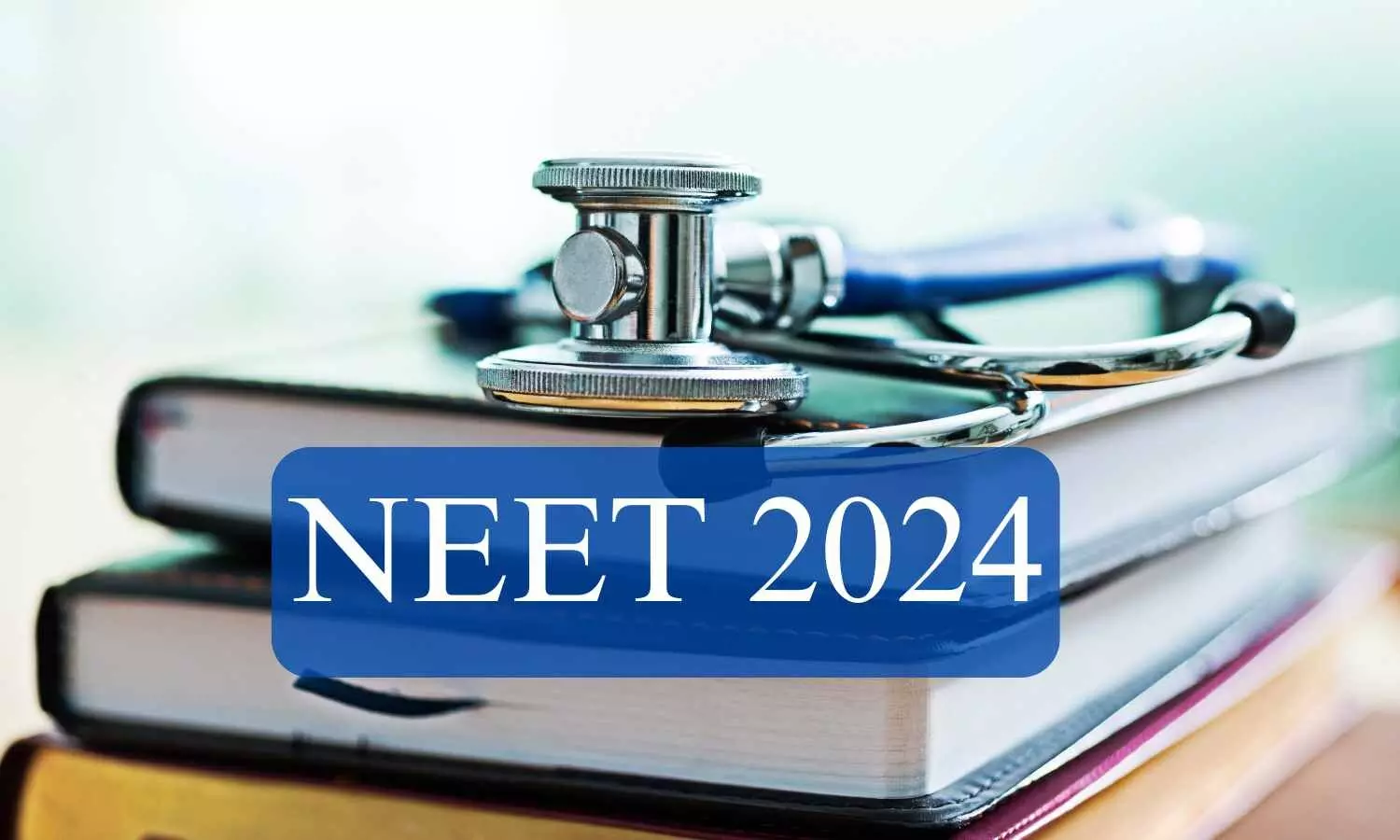
Patna: In a recent update in the ongoing investigation on the allegations of paper leak in the National Eligibility-and-Entrance Test (NEET) UG 2024, the Economic Offences Unit (EOU) of Bihar Policeis scrutinizing the involvement of more than 10 MBBS students from the government medical colleges based in Bihar and Jharkhand.
The officials involved in the inquiry announced on Sunday that the students were found to have connections with an interstate ‘solver gang’ and are believed to have benefited from the racket responsible for leaking the question paper for the NEET 2024 examination.
Also read- Breaking: CBI Ordered To Investigate NEET Exam Scandal
As per the latest TNIE news report, the identities and involvement of the ten medical students were brought to light after the ‘solver gang’ admitted to it during the interrogation by the investigation team. Following this, the team made a list and conducted raids in Ranchi and Hazaribagh in search of the students, but they managed to evade arrest.
The controversies surrounding the solver gang’s involvement in the NEET UG 2024 who leaked exam papers and also provided proxy candidates has sparked a nationwide outrage with aspirants demanding justice in this matter.
So far, Six middlemen, four students and three parents – a total of 13 people – have been arrested in connection with the NEET-UG 2024 paper leak case.
During the investigation, the team found the mastermind behind the case identified as Sanjeev Singh, who also goes by Sanjeev ‘Mukhiya’. He is a resident of the Nalanda district and initially worked for an education mafia Ranjeet Don of Nalanda. Mukhiya’s son Shiv is learnt to have done his MBBS from Patna Medical College and Hospital and is now lodged in Beur central jail.
Shiv is an accused in the leak of question paper of teachers’ recruitment through Bihar Public Service Commission. Meanwhile, EOU has stumbled upon evidence on NEET-UG paper leak, officials further informed TNIE.
Medical Dialogues team had earlier reported that four arrested men confessed that the question paper for the MBBS entrance test had leaked the previous night. These four accused include NEET aspirant Yadav, his uncle Sikandar, who is a Junior Engineer at Danapur Municipal Council, and two others- Nitish Kumar and Amit Anand. They confessed that they received the question paper for the NEET examination on the day before the exam date i.e. May 5, 2024.
As per these accused, they were made to memorize the paper. In their statement to the Bihar police officials, these four accused stated that the exact questions were asked in the exam the next day.
Meanwhile, responding to the demands of various medical aspirants who called out the alleged irregularities in the conduct of the NEET exam and demanded a CBI inquiry into the matter, the Ministry of Education entrusted the matter of alleged irregularities in NEET (UG) Examination 2024 to CBI for the comprehensive investigation.
This year’s National Eligibility-and-Entrance Test Undergraduate (NEET-UG) 2024 Examination was mired in controversies after the allegations of paper leak came into light. Around 13 people, including four examinees and their family members, were arrested in Bihar for their alleged involvement in the paper leak of the NEET-UG exam. Patna police sources had previously claimed that the NEET-UG question papers along with their answers were provided to around 20 aspirants a day before the date of the exam i.e. May 5, 2024.
Then, the Economic Offences Unit (EOU) of Bihar Police, which took over the investigation, revealed that the brokers involved in the NEET paper leak scam took between Rs 30 lakh to Rs 50 lakh from each of the medical aspirants in exchange for giving them the question paper of the NEET UG 2024 question paper ahead of the examination.
Multiple pleas have been filed before the High Courts and the Supreme Court seeking an investigation into the alleged paper leak scam. Some of the pleas demanded the scrapping of the NEET UG 2024 exam and holding a retest.
Meanwhile, NEET aspirants across the country have been protesting against the alleged paper leak issue in NEET UG 2024 and the National Testing Agency’s policy of awarding grace marks to 1563 candidates. While finally the NTA decided to scrap the grace marks, the issue of alleged paper leak is still unsolved.
Although earlier, the Union Education Minister Dharmendra Pradhan had denied such allegations of paper leak, recently he assured action against NTA officials if they were found guilty of the “irregularities” in the conduct of the MBBS entrance exam.
The NEET 2024 issue has now taken a political turn as opposition parties are accusing the government over the allegations of rigging, paper leaks, and corruption. Recently Congress leader Rahul Gandhi argued that the BJP-ruled states were the “epicentre of paper leak”.
While hearing pleas concerning the NEET examination, the apex court had on June 18 said that even if there was “0.001 per cent negligence” on the part of anyone in the conduct of the examination, it should be thoroughly dealt with.
The Apex Court had also sought responses from the Centre and the NTA on a plea for a Central Bureau of Investigation (CBI) probe into allegations of question paper leak and other irregularities in the exam.
Also read- NEET 2024 Paper Was Leaked! 4 Accused Confess To Bihar Police
Powered by WPeMatico
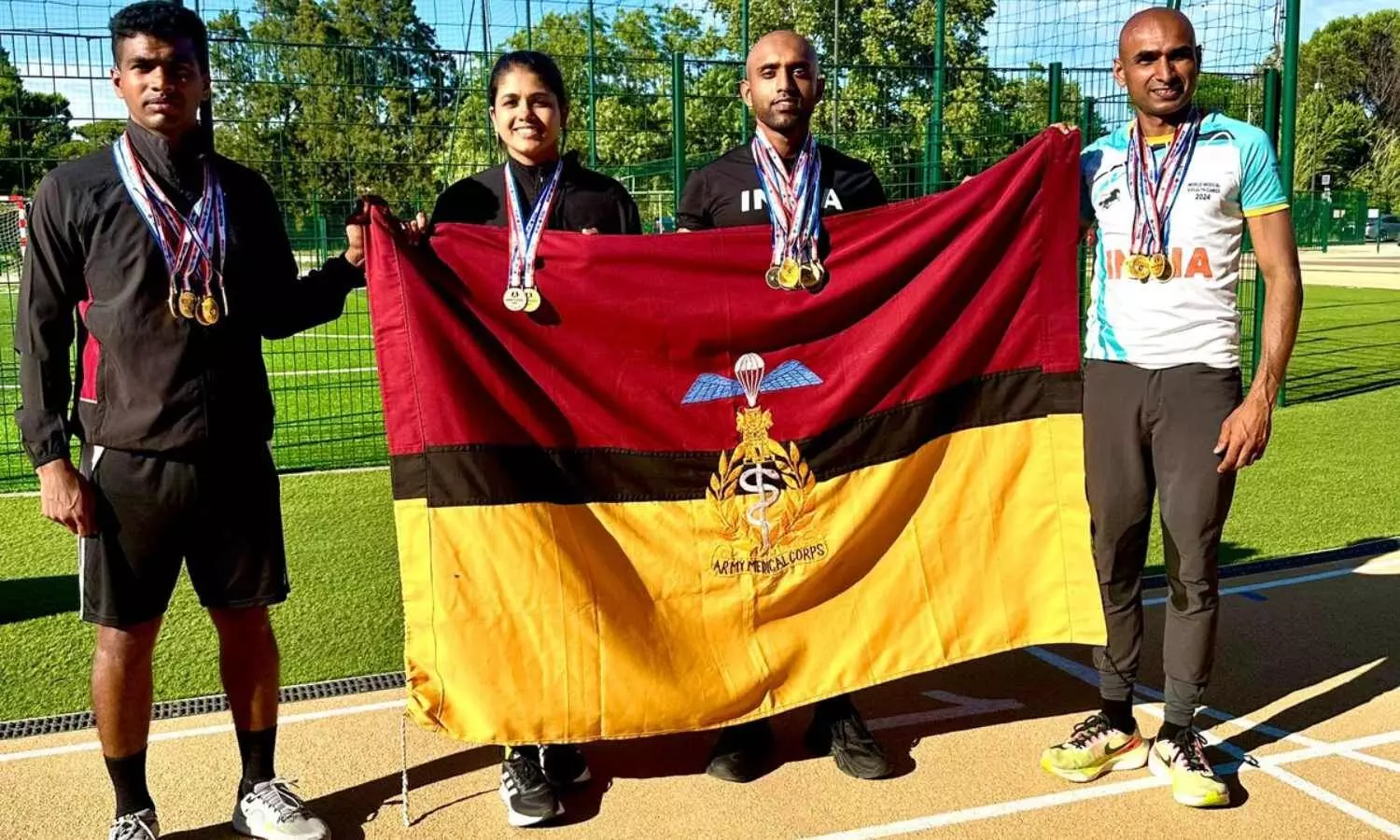
France: Four Armed Forces Medical Service (AFMS) Officers have brought laurels to India by clinching a record 32 Medals in the 43rd World Medical and Health Games held in Saint-Tropez, France, from 16 to 23rd June 2024.
These Officers, namely Lt Col Sanjeev Malik, Maj Anish George, Capt Stephen Sebastian, and Capt Dania James, made history by winning 19 Gold Medals, 09 Silver Medals and 04 Bronze Medals in the in World’s largest sports event for health professionals.
The breakdown of the victories are as follows: Lt Col Sanjeev Malik VSM, Five Gold Medals (Above 35yrs Male Category) – Events: 800m, 1500m, 3000m, 5000m, Cross Country and 4x100m Relay. Maj Anish George, Four Gold, Six Silver and Two Bronze Medals (Under 35 yrs Male Category) – Events: 100m, 200m, 400m, 800m, 1500m, 5000m, Javelin, Shotput, Discus Throw, Hammer Throw and Power Lifting. Capt Stephen Sebastian, Six Gold Medals (Under 35 yrs Male Category) – Events: 100m, 200m, 400m, Long Jump, Hammer Throw and 4x100m Relay. Capt Dania James, Four Gold, Three Silver, Two Bronze Medals (Under 35 yrs Female Category) Events: 100m, 200m, 4×100 Relay, Javelin, Discus Throw, Shot Put, Badminton Solo, Badminton Doubles and Powerlifting.
The DGAFMS Lt Gen Daljit Singh has congratulated the Officers for the spectacular performances and wished them more laurels in the future.
The World Medical and Health Games, often regarded as the Olympic Games for Health Professionals, has evolved into the most prestigious global sporting event within the medical community. With a legacy dating back to 1978, the Games annually attract over 2500 participants from more than 50 different nations.
The performances by the Indian Armed Forces Medical Services Officers not only highlight their excellence but also showcase the dedication of healthcare professionals globally, blending their medical expertise with athletic achievements. This will inspire thousands of Doctors and Nurses across the length and breadth of the country to be ambassadors of fitness, too.
Powered by WPeMatico
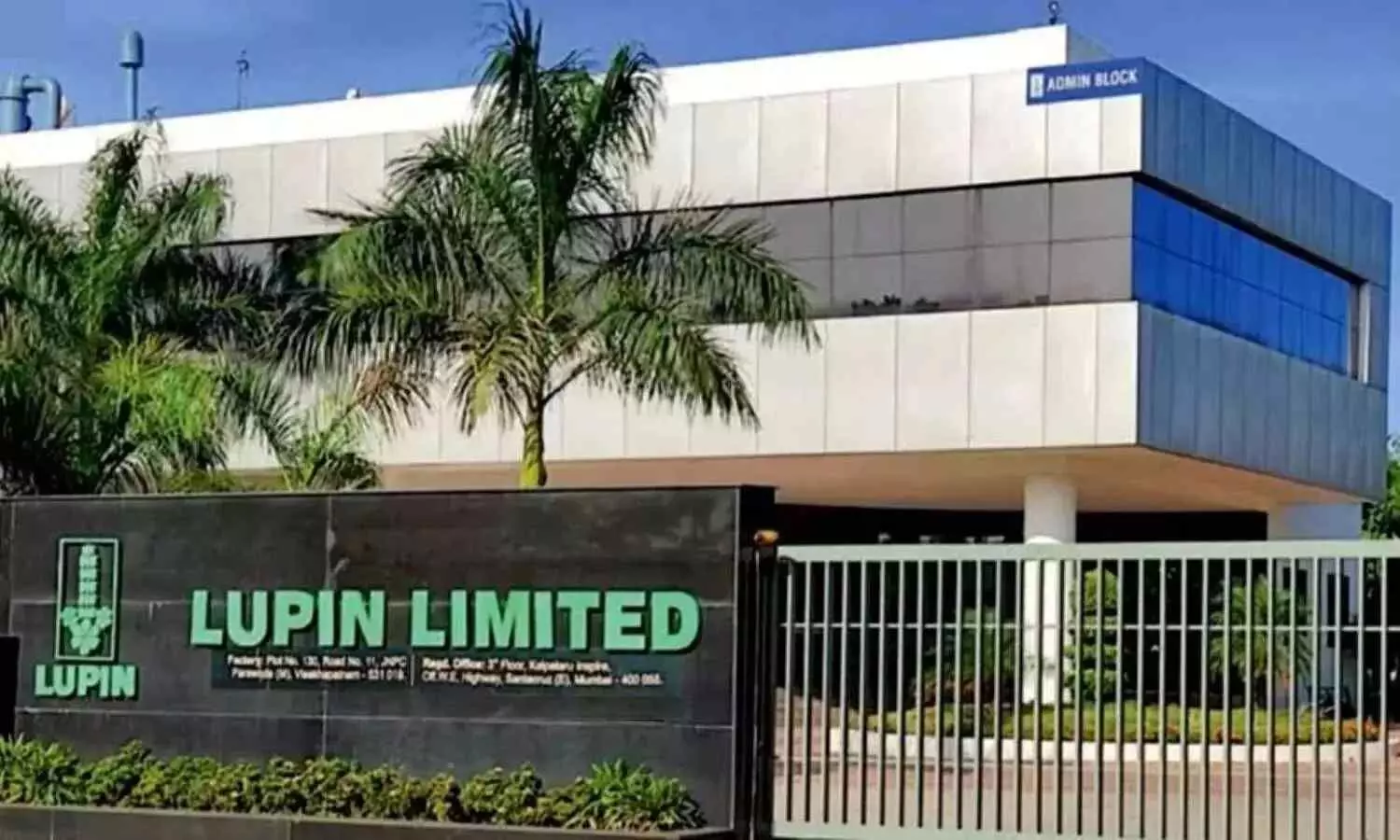
Mumbai: Global pharma major Lupin Limited today announced that it has
received the Establishment Inspection Report (EIR) from the United States Food and Drug Administration (U.S. FDA) for its manufacturing facility in Somerset, New Jersey, with a Voluntary Action Indicated (VAI)
status.
Voluntary action indicated (VAI), which means objectionable conditions or practices were found, but the agency is not prepared to take or recommend any administrative or regulatory action.
The facility was inspected from May 7 to May 17, 2024.
“We are very pleased to have received the EIR with a satisfactory VAI status for our Somerset facility. This
is a significant milestone in building our reputation of being best-in-class in Quality and Compliance,”
said Nilesh Gupta, Managing Director, Lupin.
Medical Dialogues team had earlier reported that U.S. FDA had concluded a Pre Approval Inspection with an issuance of a Form-483 with six observations at Lupin’s Somerset, New Jersey manufacturing facility.
Read also: Lupin gets 6 USFDA observations for Somerset facility
Lupin is an innovation-led transnational pharmaceutical company headquartered in Mumbai, India. The
Company develops and commercializes a wide range of branded and generic formulations, biotechnology
products, and APIs in over 100 markets in the U.S., India, South Africa, and across the Asia Pacific (APAC), Latin
America (LATAM), Europe, and Middle East regions.
The Company specializes in the cardiovascular, anti-diabetic, and respiratory segments and has
a significant presence in the anti-infective, gastro-intestinal (GI), central nervous system (CNS), and women’s
health areas. The company
invested 7.8% of its revenue in research and development in FY24.
Lupin has 15 manufacturing sites, 7 research centers.
Powered by WPeMatico

Pune: In a significant development, Dr Eknath Pawar, the professor and head of the orthopaedic department at Grant Medical College and JJ Hospital in Mumbai, has been given the additional charge of dean at BJ Medical College and Sassoon Hospital, Pune.
This fresh appointment comes after Dr Chandrakant Mhaske, dean of Baramati Medical College was given the additional charge of Sasson Hopsiital as the dean 22 days ago. Replacing Dr Mhaske, the government appointed Dr Pawar as the new dean.
Medical Dialogues team reported in May that the Maharashtra government handed over the additional charge of the medical college and hospital dean to Dr Chandrakant Mhaske. He was the incumbent dean at Punyashlok Ahilyadevi Government Medical College, Baramati, Pune.
This decision was taken after B J Medical College and Sassoon General Hospital dean Dr Vinayak Kale was sent on compulsory leave due to allegations of not treating the situation with the necessary seriousness and failing to make appropriate decisions as dean.
Two doctors of Sassoon Hospital were arrested for allegedly discarding the blood samples of the 17-year-old boy suspect accused of murdering two software engineers and replacing them with another person’s samples.
The two doctors accused of tampering with the blood sample reports include the head of the Forensic Medicine department of Sassoon General Hospital and the chief medical officer of the Sassoon Hospital.
During the investigation, it was revealed that the Chief Medical Officer reportedly replaced the blood samples on the direction of the HOD on 19th May at around 11 am. The CMO allegedly threw the blood samples in a dustbin of the hospital and sent the blood samples of another person to the forensic lab. As a result, the report showed no alcohol traces of the accused.
A government order (GO) issued on June 20 mentioned, “Dr Eknath Pawar would continue to handle his responsibilities at Mumbai as professor of orthopaedics and also handle the additional charge of Dean BJ Medical College and Sassoon General Hospital in Pune.”
Speaking to The Indian Express, Dr Pawar said, “I am an alumnus of this institution and will come to Pune on Friday. Initially, I will hold meetings and understand issues that are important at BJ Medical College. The aim is to do good work here. In my absence at Grant Government Medical College and JJ Hospital, senior doctors in the orthopaedics department will conduct the relevant activities.”
Powered by WPeMatico
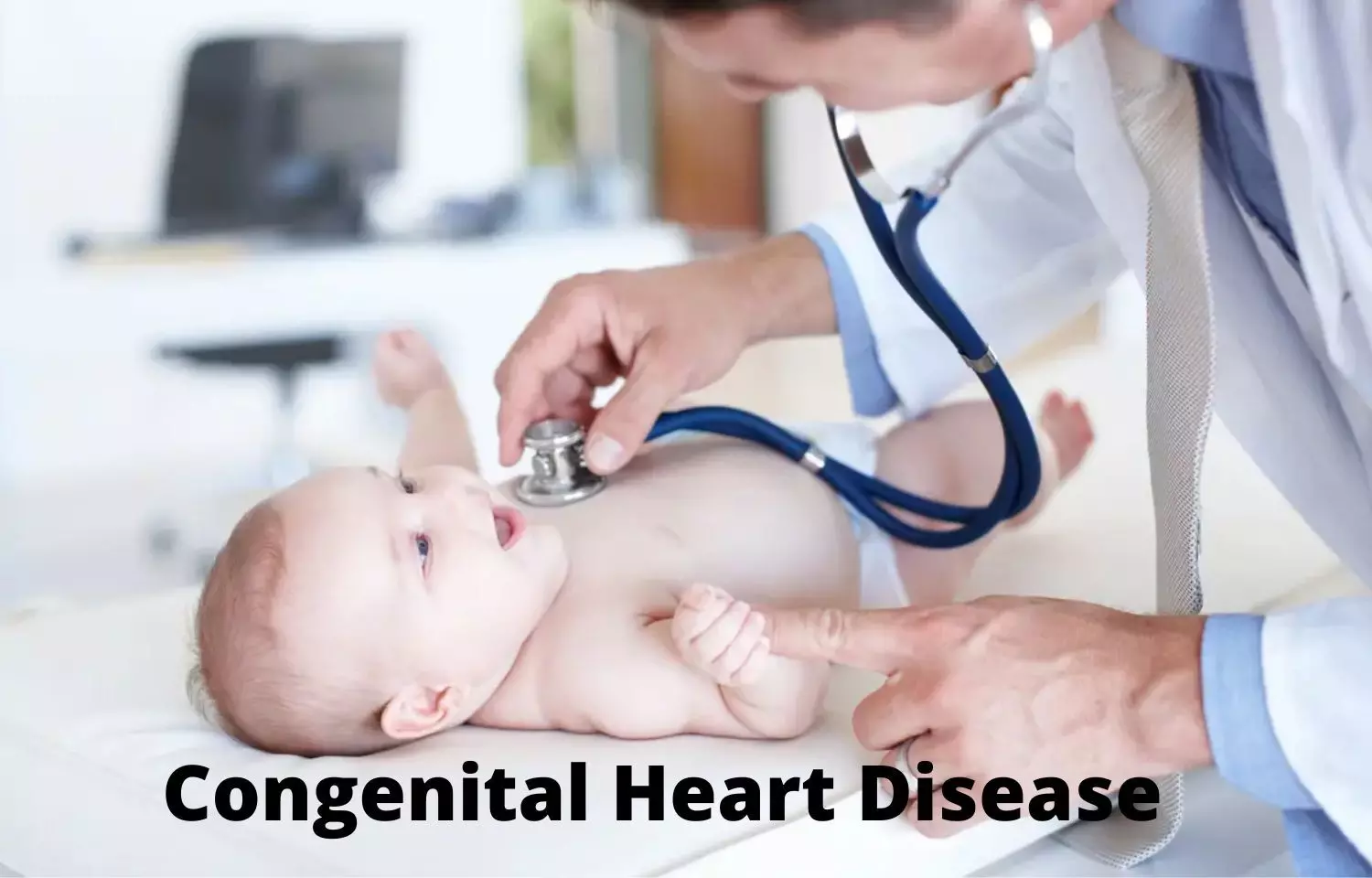
Researchers have found that incorporating machine learning (ML) algorithms into pulse oximetry screenings significantly improves the detection of critical congenital heart disease (CCHD) in newborns. This innovative approach addresses the limitations of traditional oxygen saturation (Spo2) screening, particularly in identifying conditions like coarctation of the aorta (CoA). This study was published in the Journal of American Heart Association by Heather S. and colleagues.
Traditional Spo2 screening has not been effective in early detection of CCHD, often missing crucial diagnoses such as CoA. To enhance detection rates, researchers developed an ML pulse oximetry algorithm that integrates perfusion data and radiofemoral pulse delay. This study aimed to evaluate the effectiveness of this advanced screening method.
The study enrolled 523 newborns from six different sites, including those with and without CCHD. Researchers recorded simultaneous pre- and postductal pulse oximetry readings. The ML algorithms were tested under various conditions: with one versus two time points and with or without pulse delay data. The sensitivity, specificity, and area under the receiver operating characteristic (ROC) curve were compared between the traditional Spo2-alone method and the new ML algorithms.
Out of the 523 newborns, 317 had no congenital heart disease (CHD), 74 had CHD, and 132 had CCHD, including 21 cases of isolated CoA.
The Spo2-alone method missed 26.2% of CCHD cases. When focusing on patients with both two time-point measurements and pulse-delay data (65 without CHD, 14 with CCHD), the ML algorithm significantly improved detection rates.
The ML model incorporating two time points and pulse delay data achieved a sensitivity of 92.86% for CCHD detection, compared to 71.43% with Spo2 alone.
For CoA, the sensitivity improved from 0% to 66.67%.
All ML models maintained 100% specificity.
The area under the ROC curve for CCHD detection increased from 0.83 to 0.96, and for CoA detection from 0.48 to 0.83, both showing significant improvements (P=0.03).
The study highlights the substantial benefits of using an ML algorithm that incorporates oxygenation, perfusion data, and pulse delay at two time points for detecting CCHD and CoA in newborns. The significant improvement in sensitivity and specificity indicates that this approach can greatly enhance early diagnosis and intervention, potentially saving lives and reducing long-term health complications associated with delayed diagnosis.
In conclusion, ML-enhanced pulse oximetry that combines multiple data points and time measurements significantly improves the detection of CCHD and CoA in newborns within the first 48 hours of life. This advanced screening method holds promise for better early diagnosis and improved outcomes for infants with these critical conditions.
Reference:
Siefkes, H., Oliveira, L. C., Koppel, R., Hogan, W., Garg, M., Manalo, E., Cresalia, N., Lai, Z., Tancredi, D., Lakshminrusimha, S., & Chuah, C.-N. (2024). Machine learning–based critical congenital heart disease screening using dual‐site pulse oximetry measurements. Journal of the American Heart Association, 13(12). https://doi.org/10.1161/jaha.123.033786
Powered by WPeMatico
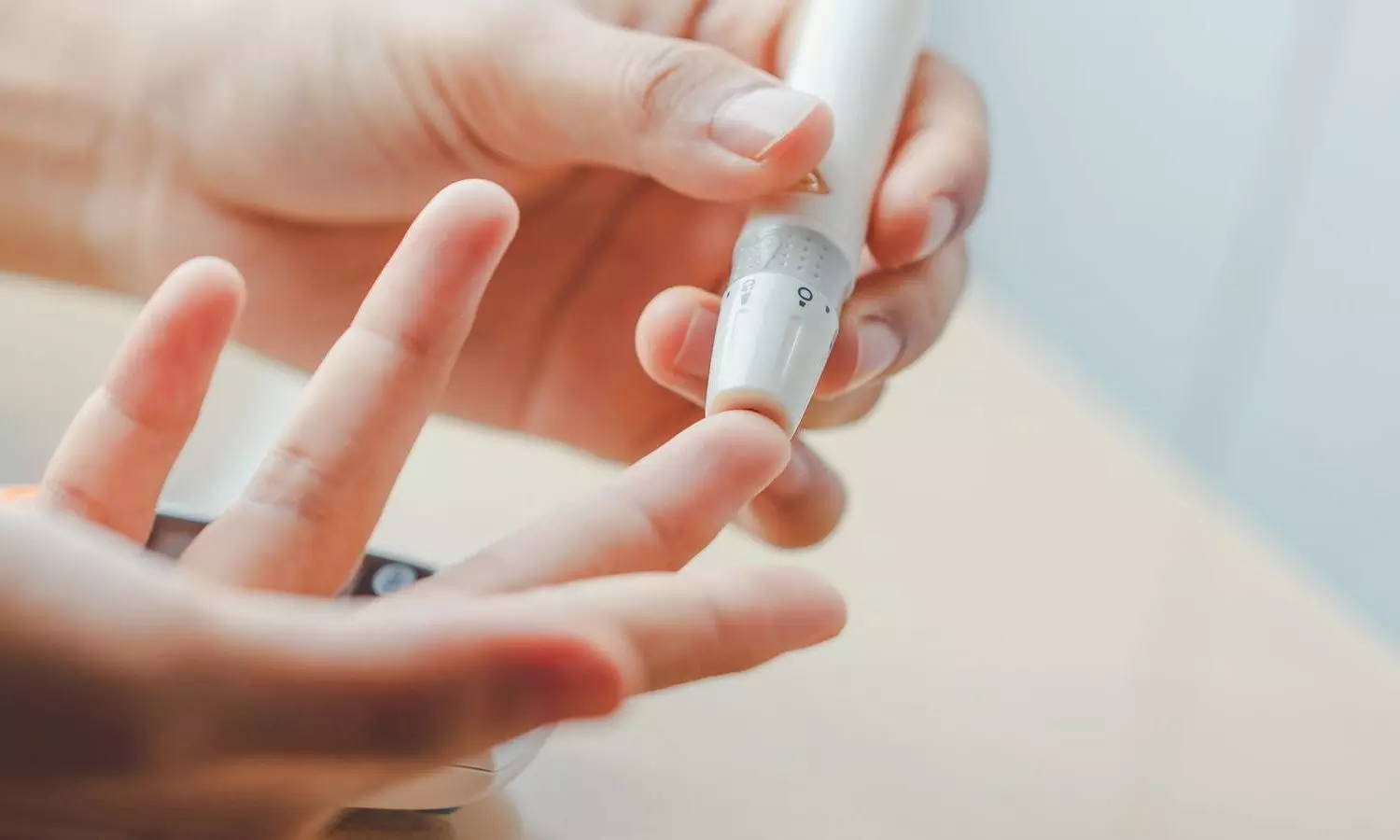
A recent clinical trial published in the Journal of American Medical Association revealed that an intermittent fasting regimen, combined with meal replacement (5:2 MR), significantly improves glycemic control and promotes weight loss in patients with early type 2 diabetes. The EARLY (Exploration of Treatment of Newly Diagnosed Overweight/Obese Type 2 Diabetes Mellitus) study was conducted across nine centers in China to compare the efficacy of the 5:2 MR diet to standard medications, metformin and empagliflozin.
This study was held from November 13, 2020 to December 29, 2022 and included a total of 509 screened patients, with 405 meeting eligibility criteria. These participants were randomly assigned to three groups, who received either metformin, empagliflozin or the 5:2 MR diet for 16 weeks, followed by an 8-week observation period. The study targeted newly diagnosed, overweight, or obese adults with type 2 diabetes to identify effective early interventions.
The participants in the 5:2 MR group followed a diet plan involving two nonconsecutive fasting days per week and were supplemented with meal replacements, while maintaining their habitual dietary intake on the remaining five days. This approach was contrasted with the conventional daily medication regimens of metformin or empagliflozin. The primary endpoint was the reduction in hemoglobin A1c (HbA1c) levels over 16 weeks. Secondary measures included changes in body weight, various anthropometric parameters and key biochemical markers. The results were analyzed to determine the comparative effectiveness of the interventions.
The study found that the 5:2 MR group expressed the most significant decrease in HbA1c levels, with a mean reduction of 1.9% (SE, 0.2%). This improvement surpassed that of the metformin group, which showed a 1.6% reduction (SE, 0.2%), and the empagliflozin group which demonstrated a 1.5% reduction (SE, 0.2%). The adjusted mean difference in HbA1c reduction between the 5:2 MR group and the medication groups was statistically significant. The 5:2 MR group achieved superior weight loss which averaged for a 9.7 kg reduction (SE, 2.2 kg) by week 16. But, the metformin group lost an average of 5.5 kg (SE, 2.3 kg) and the empagliflozin group 5.8 kg (SE, 2.3 kg).
The results of this clinical trial suggest that the 5:2 MR dietary intervention is a potential and effective strategy for managing early type 2 diabetes by offering advantages in both glycemic control and weight reduction over standard pharmaceutical treatments. This intermittent fasting approach may represent a promising alternative for early-stage diabetes management, highlighting the potential for dietary modifications to play a critical role in treating chronic conditions..
Source:
Guo, L., Xi, Y., Jin, W., Yuan, H., Qin, G., Chen, S., Zhang, L., Liu, Y., Cheng, X., Liu, W., & Yu, D. (2024). A 5:2 Intermittent Fasting Meal Replacement Diet and Glycemic Control for Adults With Diabetes. In JAMA Network Open (Vol. 7, Issue 6, p. e2416786). American Medical Association (AMA). https://doi.org/10.1001/jamanetworkopen.2024.16786
Powered by WPeMatico

Coconut water is more effective than a placebo for inducing clinical remission in patients with mild to moderate ulcerative colitis suggests a study published in the Clinical Gastroenterology and Hepatology.
Coconut water more effective than placebo for inducing clinical remission in patients with mild to moderate ulcerative colitis: Study
Coconut water (CW) is anti-inflammatory, can manipulate the gut microbiome, and is a rich source of potassium. Gut microbiome modulation improves outcomes in ulcerative colitis (UC), and potassium possesses in vitro anti-inflammatory properties. They evaluated the effect of CW as an adjunct therapy for patients with mild-moderate UC. This single-centre, double-blind, placebo-controlled trial randomised patients with mild to moderate (Simple Clinical Colitis Activity Index [SCCAI]: 3–9) endoscopically active UC (Ulcerative Colitis Endoscopic Index of Severity [UCEIS] >1) in 1:1 ratio to CW + standard medical therapy (SMT) vs placebo + SMT. Four hundred mL of CW was administered for 8 weeks. The primary outcome measure was clinical remission (SCCAI ≤2), and the secondary outcome measures were clinical response (SCCAI decline ≥3) and adverse events at 8 weeks.
Microbiome was analyzed at baseline and 8 weeks. Results: Of 121 patients screened, 95 were included for modified intention to treat analysis (CW, n = 49; placebo, n = 46) (mean age, 37.2 ± 11.2 years; males, 54.1%; disease duration, 48 months [interquartile range (IQR), 24–90 months]; pancolitis, 26.1%; SCCAI, 5 [IQR, 4–6]; UCEIS, 4 [IQR, 3–5]). Clinical response (57.1% vs 28.3%; odds ratio [OR], 3.4; 95% confidence interval [CI], 1.4–7.9; P = .01), remission (53.1% vs 28.3%; OR, 2.9; 95% CI, 1.2–6.7; P = .02), and proportion of patients with fecal calprotectin (FCP) <150 μg/g (30.6% vs 6.5%; OR, 6.3; 95% CI, 1.7–23.6; P = .003) were significantly higher in CW. The relative abundance of bacterial taxa that had a significant or trend towards negative correlation with SCCAI, UCEIS, or FCP increased at 8 weeks in CW, and this effect was independent of disease activity and dietary fiber. Adverse events were comparable, and no patient developed hyperkalemia. CW was more effective than placebo for induction of clinical remission in patients with mild to moderate UC.
Reference:
Kedia S, Virmani S, Bajaj A, Markandey M, Singh N, Madan D, Kaushal K, Sahu P, Vuyyuru SK, Kante B, Kumar P, Thomas DM, Mundhra SK, Singh MK, Verma M, Sharma R, Das P, Dash NR, Monga N, Awasthi A, Makharia G, Ahuja V. Coconut Water Induces Clinical Remission in Mild to Moderate Ulcerative Colitis: Double-blind Placebo-controlled Trial. Clin Gastroenterol Hepatol. 2024 Jun;22(6):1295-1306.e7. doi: 10.1016/j.cgh.2024.01.013. Epub 2024 Jan 24. PMID: 38278200.
Powered by WPeMatico

China: In a groundbreaking study published in Diabetes Research and Clinical Practice, researchers have shed light on the role of asprosin in the early stages of type 2 diabetes and prediabetes. Asprosin, a hormone discovered relatively recently, has been linked to glucose metabolism and appetite regulation. This study marks a significant step forward in understanding how its concentrations fluctuate in individuals on the cusp of diabetes.
This investigation revealed that individuals with prediabetes and those newly diagnosed with type 2 diabetes mellitus (T2DM) exhibit increased serum asprosin levels, indicating that elevated asprosin concentrations are linked to early disturbances in glucose homeostasis.
Hongcui Diao, Department of Endocrinology, Jinan Central Hospital, Shandong University, Jinan, China, and colleagues aimed to clarify the relationship between serum asprosin levels and T2DM occurrence in light of mixed findings about the asprosin’s role in T2DM and the lack of studies on its effects on prediabetic conditions.
In the observational analysis, the cohort comprised 252 adults aged 22–69 recruited from Jinan Central Hospital. They were categorized into three groups; normal glucose tolerance (NGT), impaired glucose regulation (IGR), and T2DM groups.
Serum asprosin levels were measured using enzyme-linked immunosorbent assay (ELISA). In addition, all participants underwent assessments of various biochemical and anthropometric markers.
The following were the key findings of the study:
In the study, individuals recently diagnosed with diabetes showed heightened serum asprosin levels, while those identified as prediabetic exhibited moderately increased levels. This pattern indicates a potential connection between elevated asprosin levels and disruptions in glucose-handling mechanisms, observable from the early stages of diabetes onset.
As the global burden of diabetes continues to rise, with over 400 million people affected worldwide, research into novel biomarkers like asprosin offers hope for more effective management and prevention strategies. This study not only deepens the understanding of diabetes pathophysiology but also underscores the potential of personalized medicine in tackling this widespread health challenge.
Reference:
Diao, H., Fan, X., Li, Z., Hou, L., Dong, Z., & Pang, S. (2024). Circulating asprosin concentrations in individuals with new-onset type 2 diabetes and prediabetes. Diabetes Research and Clinical Practice, 213, 111730. https://doi.org/10.1016/j.diabres.2024.111730
Powered by WPeMatico
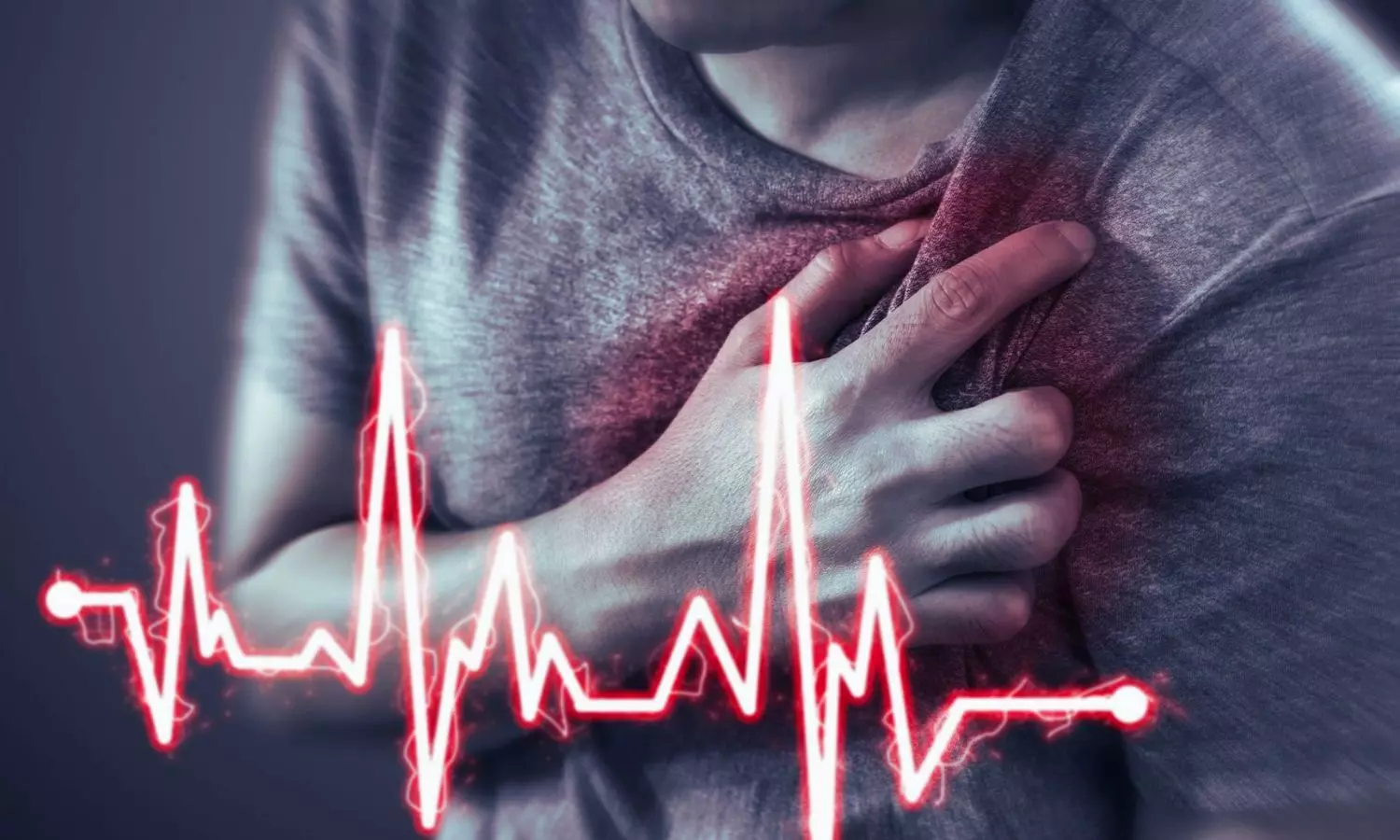
Canada: Scientists have achieved a significant milestone in rare genetic disorders with the development of a novel clinical diagnostic test for Calcium Release Deficiency Syndrome (CRDS). The research marks a crucial step forward in identifying and managing this elusive condition, which affects a small but vulnerable population worldwide.
The preliminary findings published in the Journal of the American Medical Association (JAMA) suggest that the repolarization response on an electrocardiogram (ECG) following brief tachycardia and subsequent pause shows promise as an effective diagnostic indicator for CRDS.
“Considering the prevalence of unexplained cardiac arrest, if confirmed in larger studies, this readily available procedure could offer clinically actionable insights,” the researchers wrote.
The multicenter, international, case-control study showed that a provoked measure of T-wave amplitude on an ECG ascertained CRDS cases with high accuracy. The genetic mouse models mirrored the human findings and indicated that an excessively large systolic calcium release from the sarcoplasmic reticulum was likely the cause.
CRDS, a genetic disorder characterized by impaired calcium release from the sarcoplasmic reticulum in muscle cells, presents with diverse symptoms ranging from muscle weakness and fatigue to potentially life-threatening cardiac arrhythmias. Until now, diagnosing CRDS has been challenging due to its rarity and complex clinical presentation, often leading to delays in treatment and management.
Against the above background, Mingke Ni, University of Calgary, Calgary, Alberta, Canada, and colleagues aimed to explore the cardiac repolarization response on an ECG after brief tachycardia and a pause as a clinical diagnostic test for CRDS.
An international, multicenter, case-control study conducted across 10 centers in 7 countries included cases of CRDS and three control groups: individuals with suspected supraventricular tachycardia, survivors of unexplained cardiac arrest (UCA), and individuals with genotype-positive catecholaminergic polymorphic ventricular tachycardia (CPVT). The study also utilized genetic mouse models (CRDS, wild type, and CPVT) to elucidate the cellular mechanism underlying the condition. Patient tracings were recorded between 2005 and 2023.
The main outcome was a change in QT interval and a change in T-wave amplitude (defined as the difference between their absolute values on the post-pause sinus beat and the last beat before tachycardia).
The following were the key findings of the study:
The findings revealed a unique repolarization response on an ECG after provocation with brief tachycardia and a subsequent pause in CRDS cases and mouse models, which is absent from the controls.
“These findings, if confirmed in larger studies, this easy-to-perform maneuver could be an effective clinical diagnostic test for CRDS and become an important part of the cardiac arrest evaluation,” the researchers concluded.
Reference:
Ni M, Dadon Z, Ormerod JOM, et al. A Clinical Diagnostic Test for Calcium Release Deficiency Syndrome. JAMA. Published online June 20, 2024. doi:10.1001/jama.2024.8599
Powered by WPeMatico
